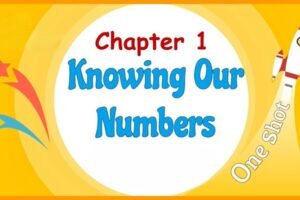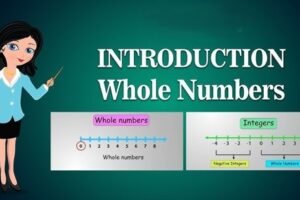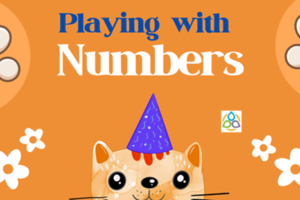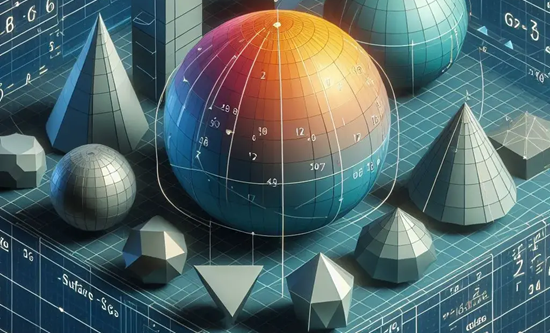
Chapter 10: Mensuration
Mensuration – Class 6 Maths Notes
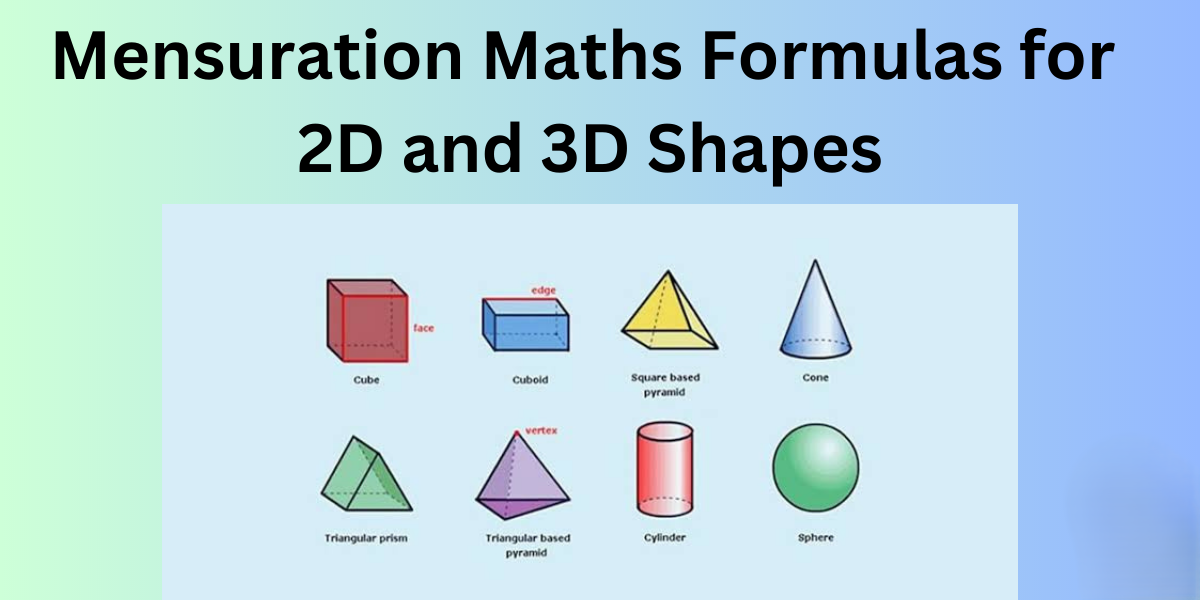
Mensuration
Mensuration is the branch of mathematics that deals with the measurement of length, area or volume of various geometric shapes.
A branch of mathematics that talks about the length, volume, or area of different geometric shapes is called Mensuration. These shapes exist in 2 dimensions or 3 dimensions. Let’s learn the difference between the two.
Differences Between 2D and 3D shapes
| 2D Shape | 3D Shape |
|---|---|
| If a shape is surrounded by three or more straight lines in a plane, then it is a 2D shape. | If a shape is surrounded by a no. of surfaces or planes then it is a 3D shape. |
| These shapes have no depth or height. | These are also called solid shapes and unlike 2D they have height or depth. |
| These shapes have only two dimensions say length and breadth. | These are called Three dimensional as they have depth (or height), breadth and length. |
| We can measure their area and Perimeter. | We can measure their volume, CSA, LSA or TSA. |
Mensuration in Maths- Important Terminologies
Let’s learn a few more definitions related to this topic.
| Terms | Abbreviation | Unit | Definition |
| Area | A | m2 or cm2 | The area is the surface which is covered by the closed shape. |
| Perimeter | P | cm or m | The measure of the continuous line along the boundary of the given figure is called a Perimeter. |
| Volume | V | cm3 or m3 | The space occupied by a 3D shape is called a Volume. |
| Curved Surface Area | CSA | m2 or cm2 | If there’s a curved surface, then the total area is called a Curved Surface area. Example: Sphere |
| Lateral Surface area | LSA | m2 or cm2 | The total area of all the lateral surfaces that surrounds the given figure is called the Lateral Surface area. |
| Total Surface Area | TSA | m2 or cm2 | The sum of all the curved and lateral surface areas is called the Total Surface area. |
| Square Unit | – | m2 or cm2 | The area covered by a square of side one unit is called a Square unit. |
| Cube Unit | – | m3 or cm3 | The volume occupied by a cube of one side one unit |
Mensuration Formulas
Now let’s learn all the important mensuration formulas involving 2D and 3D shapes. Using this mensuration formula list, it will be easy to solve the mensuration problems. Students can also download the mensuration formulas list PDF from the link given above. In general, the most common formulas in mensuration involve surface area and volumes of 2D and 3D figures.
Mensuration Formulas For 2D Shapes
| Shape | Area (Square units) | Perimeter (units) | Figure |
|---|---|---|---|
| Square | a2 | 4a | |
| Rectangle | l × b | 2 ( l + b) | |
| Circle | πr2 | 2 π r | |
| Scalene Triangle | √[s(s−a)(s−b)(s−c)],
Where, s = (a+b+c)/2 |
a+b+c | |
| Isosceles Triangle | ½ × b × h | 2a + b | |
| Equilateral triangle | (√3/4) × a2 | 3a | |
| Right Angle Triangle | ½ × b × h | b + hypotenuse + h | |
| Rhombus | ½ × d1 × d2 | 4 × side | |
| Parallelogram | b × h | 2(l+b) | |
| Trapezium | ½ h(a+c) | a+b+c+d |
Mensuration Formulas for 3D Shapes
| Shape | Volume (Cubic units) | Curved Surface Area (CSA) or Lateral Surface Area (LSA) (Square units) | Total Surface Area (TSA) (Square units) | Figure |
|---|---|---|---|---|
| Cube | a3 | LSA = 4 a2 | 6 a2 | |
| Cuboid | l × b × h | LSA = 2h(l + b) | 2 (lb +bh +hl) | |
| Sphere | (4/3) π r3 | 4 π r2 | 4 π r2 | |
| Hemisphere | (⅔) π r3 | 2 π r 2 | 3 π r 2 | |
| Cylinder | π r 2 h | 2π r h | 2πrh + 2πr2 | |
| Cone | (⅓) π r2 h | π r l | πr (r + l) |
3. Applications of Perimeter and Area
Understanding perimeter and area helps solve real-life problems, such as:
- Calculating the length of a fence required to enclose a garden (perimeter).
- Determining the amount of paint needed to cover a wall (area).
- Finding the amount of land occupied by a plot (area).
Word Problems
- Problem: A farmer wants to fence his rectangular field of length 50 m and breadth 30 m. What is the total length of the fence required?Solution:
The farmer needs 160 meters of fencing.
- Problem: A square park has a side length of 20 m. What is its area?Solution:
The area of the park is 400 square meters.
4. Important Points to Remember
- Always use the same units while performing calculations for perimeter or area. Convert units if necessary.
- Perimeter is a linear measurement, while area is a square measurement.
- Formulas should be memorized for quick calculations.
- Double-check calculations to avoid errors, especially in exams.
5. Practice Questions
- Find the perimeter of a square with a side length of 12 cm.
- Calculate the area of a rectangle with length 15 cm and breadth 10 cm.
- A triangular field has a base of 20 m and a height of 10 m. Find its area.
- The length and breadth of a rectangle are 25 m and 15 m, respectively. What is its perimeter?
- A regular hexagon has a side length of 6 cm. Find its perimeter.
6. Higher-Level Thinking Questions
- A rectangular garden has a length of 40 m and a breadth of 25 m. If the cost of fencing the garden is Rs. 50 per meter, what will be the total cost of fencing?
- A square tile has a side length of 8 cm. How many such tiles are required to cover a rectangular floor of 160 cm by 80 cm?
7. Summary
- Perimeter measures the boundary length of a shape.
- Area measures the surface covered by a shape.
- Formulas for squares, rectangles, triangles, and other regular polygons should be memorized and applied carefully.
- These concepts have practical applications in daily life, from construction to agriculture.
By mastering the concepts of perimeter and area, students can solve a variety of real-world problems efficiently.
Download PDF Notes and Excercise solution of the Chapter.
Please Visit Readspot for Hindi Medium Study Material

